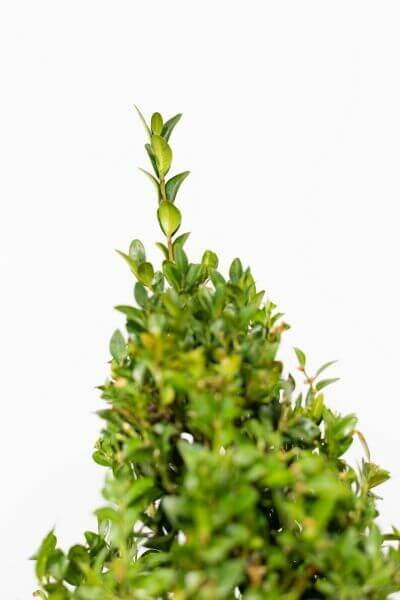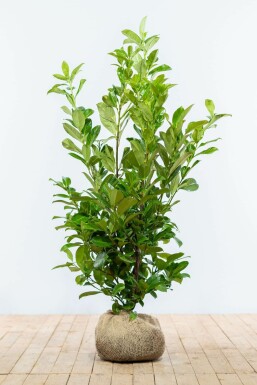Best Hedging Plants For Rooftop Gardens
Best Hedging Plants For Rooftop Gardens
Blog Article
Best Hedging Plants For Warm Climates
Improve your garden's allure with rich hedge ranges such as Yew (Taxus), Thuja, Laurel, Photinia, and Bamboo, commemorated for their structural stability and environmental benefits.
Yew and Thuja supply evergreen coverage and winter season resilience, while Laurel uses rapid growth and broad, aromatic leaves.
Photinia adds seasonal appeal with its lively red foliage, and Bamboo lends a low-maintenance, peaceful atmosphere.
These hedges enhance air quality, lower noise, and produce tranquil, personal areas.
Proper planting, spacing, and upkeep make sure energetic growth and environmental consistency.
Check out how these lush varieties can raise your garden's appeal and well-being.
Key Takeaways
Transform Your Garden With Lush Hedge Ranges
- Select Yew for its thick, evergreen development and unparalleled longevity.
- Choose Laurel for its quick development and broad leaves, ensuring fast personal privacy.
- Select Photinia for its lively seasonal foliage, which turns a striking dark red.
- Utilize Bamboo for a low-maintenance, winter-hardy hedge with aesthetic appeal.
- Space plants 2-3 per meter and prune frequently for optimal growth and health.
Popular Hedge Plants
When transforming a garden with lush hedge ranges, it's vital to consider popular hedge plants such as Yew, Thuja, Laurel, and Photinia due to their unique qualities and benefits.
Yew (Taxus) is highly esteemed for its longevity and dense, green growth, making it a prime choice for enduring landscapes.
Thuja is kept in mind for its evergreen foliage and robust winter season strength.
Photinia includes seasonal vibrancy with red leaves that darken with time, creating vibrant visual appeal.
Laurel uses fast development and aromatic, broad leaves, perfect for fast personal privacy.
In Addition, Bamboo is an exceptional option for ambiance, offering a low-maintenance, winter-hardy option that enhances the garden's visual with its classy, swaying canes.
These choices deal with a range of horticultural requirements and choices.
Advantages of Garden Hedges
Garden hedges use a plethora of advantages, making them a valuable addition to any landscape. These natural barriers are affordable to implement and supply substantial wind security, improving air flow and contributing to noise decrease. The dense foliage of hedges like Thuja and Beech makes sure personal privacy by obstructing presence, producing a serene and remote environment.
Hedges also play a crucial function in microclimate regulation, supplying a stable environment that cultivates plant growth and decreases temperature variations. Their elaborate leaf structures filter toxins, improving air quality and contributing to a healthier garden community.
Moreover, hedges master noise reduction, soaking up and deflecting sound waves to lower ambient sound levels. This dual functionality of supplying both visual and acoustic personal privacy enhances the general harmony and aesthetic appeal of any garden.
Planting and Upkeep Tips
For an effective hedge, meticulous preparation of the planting location is vital. Ensure the soil has appropriate pH and drain to support strong root development.
Space the plants properly for the picked species. Water the hedge often throughout its preliminary growth phase, changing as required with seasonal modifications.
Implement a methodical insect control and illness avoidance strategy, using organic or chemical treatments when needed. Frequently inspect for aphids, mites, and fungal infections.
Apply mulch to keep moisture and reduce weeds. Seasonal pruning promotes thick development and air blood circulation, essential for plant health.
Following these guidelines will help you cultivate a dynamic, well-kept hedge that improves the charm of your garden.
Spacing and Cutting Standards
Spacing and Cutting Standards
Correct spacing and cutting are important for cultivating healthy, aesthetically appealing hedges. Appropriate spacing guarantees each plant receives adequate nutrients, light, and air flow.
Follow these standards for optimum hedge upkeep:
- Spacing: Position hedge plants 2-3 plants per meter to motivate robust development.
- Pruning Strategies: Routine pruning is vital for keeping preferred hedge height and shape. Trim new growth in summer and cut back older wood throughout winter season.
- Seasonal Care: Change trimming techniques and schedules according to seasonal requirements to guarantee plant health.
- Hedge Height: Regularly screen and cut to keep the preferred hedge height and attain consistent looks.
Abiding by these actions will guarantee your hedge grows, boosting both the appeal and performance of your garden.
Picking the Right Hedge
Picking the Right Hedge
Picking the suitable hedge involves evaluating elements such as mature height, foliage density, and environmental strength. Successful hedge plant selection needs understanding each types' growth characteristics and site-specific flexibility.
For example, Yew (Taxus) uses outstanding longevity and thick growth, while Thuja is significant for its winter season resilience. Furthermore, considering upkeep requirements is crucial; fast-growing types like Laurel or Privet demand routine trimming, whereas low-maintenance choices like Bamboo or Ivy might be more suitable for those seeking very little maintenance.
Environmental aspects such as soil type, light availability, and wetness conditions should also assist the selection process. This mindful approach guarantees the chosen hedges will flourish, supplying both aesthetic and practical benefits to the garden landscape.
Shipment and Planting Advice
To ensure your hedge plants prosper, they need to be delivered by specialized couriers and planted without delay upon arrival.
Follow these essential steps for effective planting:
- Soil Preparation: Improve the soil with natural matter to improve drainage and nutrient material.
- Planting Depth: Develop a trench two times the width and equal to the depth of the root ball.
- Watering Techniques: Water thoroughly after planting, keeping the soil regularly wet however not saturated.
- Mulching: Use a layer of mulch to maintain wetness and suppress weeds.
Customer Support and Service
Provided the important function of prompt help in horticultural pursuits, our consumer support team is offered six days a week through telephone, email, and social media to provide professional suggestions and swiftly address any concerns. Their dedication to quick reaction times guarantees client fulfillment by solving questions connected to plant health, optimum planting approaches, and upkeep schedules.

-----------------
Email
6 days a week
This thorough support system, reinforced by an outstanding 9.3/ 10 client score, highlights our dedication to boosting the gardening experience for every single customer.
Regularly Asked Concerns
How Long Does It Consider Hedge Plants to Develop?
Hedge plants generally need one to 3 years to end up being totally developed, with the specific period varying by species and growing conditions.
Efficient care during this crucial period is essential for robust growth. Constant watering, alert weed control, and proper fertilizer application are essential in promoting strong root advancement.
For example, fast-growing species like Laurel may develop more rapidly, while slower-growing ranges such as Yew might take longer. Diligent upkeep speeds up the facility process, resulting in thick and healthy hedges.
What Are the very best Hedge Plants for Privacy?
The concern of the very best hedge plants for privacy involves examining evergreen and deciduous choices.
Evergreen hedges like Thuja, Laurel, and Cypress offer year-round coverage, making sure continuous personal privacy.
On the other hand, deciduous hedges such as Beech provide seasonal privacy, shedding leaves in cooler months.
Secret maintenance suggestions for privacy hedges consist of routine trimming, fertilizing in spring, and correct spacing-- usually 2 to 3 plants per meter.
Additionally, constant watering and persistent weed removal are important for promoting healthy, dense development.
Can Hedge Plants Draw In Wildlife to My Garden?
Yes, hedge plants can bring in wildlife to your garden by offering essential advantages like shelter, food, and nesting sites, consequently enhancing regional biodiversity. Yew, holly, and laurel are outstanding for attracting birds, while ivy supports a range of pests.
However, it is essential to note that there are some downsides, such as increased maintenance to manage bugs and regular maintenance. Thoroughly selecting and preserving hedge ranges can help balance these advantages and drawbacks, ultimately promoting a sustainable and vibrant community in your garden.
Exist Any Blooming Hedge Plants Available?
Yes, there are flowering hedge plants available that can improve the appeal of your garden.
For example, here Elaeagnus, also referred to as Olive Willow, produces aromatic white flowers in the fall, including a touch of elegance.
Photinia, another popular choice, showcases dynamic red leaves that develop into an abundant green, creating a dynamic visual impact throughout the seasons.
To make sure these plants thrive, it's necessary to practice appropriate pruning methods and seasonal upkeep, such as cutting brand-new development in the summer season and cutting back in the winter.
These measures will help maintain the health and aesthetic appeal of your flowering hedges.
How Do I Prevent Insects in My Hedge Plants?
To prevent pests in hedge plants, employ natural pest control techniques and preserve appropriate hedge care. Introduce useful bugs like ladybugs, which take advantage of hazardous insects, to produce a balanced ecosystem.
Regularly examine your hedges for signs of infestation and promptly remove any afflicted parts to avoid the spread. Make sure the health of your hedges by using well balanced fertilizers and supplying appropriate water.
Make use of mulching to keep soil moisture and proper spacing to reduce plant tension and promote robust development. These practices collectively help in minimizing bug concerns and preserving a healthy hedge.
Conclusion
In essence, choosing the right hedge ranges such as Yew, Thuja, and Laurel can change any garden into a peaceful haven. These plants supply year-round plant, enhance aesthetic appeal, and deal practical benefits like sound reduction and wind protection.
Correct planting methods, accurate spacing, constant watering, and seasonal trimming are vital for optimum growth.
Dependable shipment services and professional customer assistance ensure a smooth experience from purchase to planting, making it simpler than ever to raise your outdoor area.
Garden hedges offer a wide range of benefits, making them an important addition to any landscape. These natural barriers are affordable to implement and provide substantial wind security, improving air blood circulation and contributing to noise decrease. The dense foliage of hedges like Thuja and Beech makes sure privacy by blocking visibility, developing a serene and remote environment.

Pruning Techniques: Routine pruning is important for maintaining wanted hedge height and shape. Cut new development in summertime and cut back older wood during winter season.
Report this page